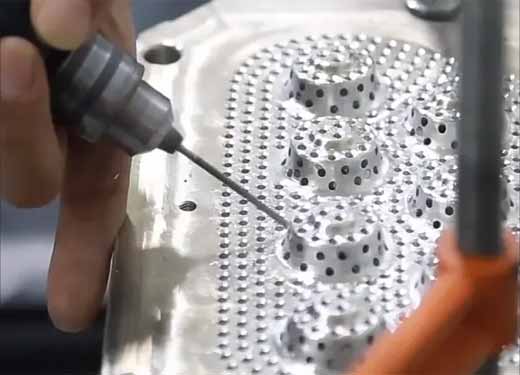Definition of Pulp Molding Die Laser Cutting
Pulp molding is an eco-friendly and sustainable process used for manufacturing various products, including food packaging, electronics packaging, and other consumer goods. The process involves using pulp molding dies, which are used to shape the paper pulp into the desired form. Laser cutting is a popular method used for cutting pulp molding dies accurately and efficiently.
Importance of Pulp Molding Die Laser Cutting
Laser cutting has become an increasingly popular method for cutting pulp molding dies due to its numerous benefits. The process allows for high precision cutting, reducing waste and increasing productivity. It is also a cost-effective method of cutting dies, reducing production costs and making the process more sustainable. Additionally, laser cutting can be used to create complex and intricate designs, enhancing the aesthetic appeal of the finished products.
Understanding Pulp Molding Die Laser Cutting
1. What is laser cutting? Laser cutting is a manufacturing process that uses a high-powered laser beam to cut or engrave materials with high precision. It is a non-contact method of cutting, meaning the laser beam does not physically touch the material being cut. Instead, the laser beam melts, burns or vaporizes the material, leaving a clean and precise edge.
2. How is laser cutting used in pulp molding die production? Laser cutting is a popular technique used in the production of pulp molding dies. Pulp molding dies are used in the production of molded pulp products, such as egg trays, fruit trays, and other packaging materials. The die is a tool that is used to shape the pulp into the desired product shape. Laser cutting is used to create the die, cutting it with precision and accuracy to ensure the final product meets the required specifications.
3. Benefits of using laser cutting in pulp molding die production Laser cutting offers numerous benefits for pulp molding die production. One of the main advantages is the high level of precision and accuracy it provides. Laser cutting allows for intricate and complex shapes to be cut with ease, resulting in a high-quality finished product. Additionally, laser cutting is a fast and efficient process, enabling manufacturers to produce dies quickly and cost-effectively. Laser cutting is also a versatile process that can be used with a wide range of materials, including metals, plastics, and ceramics. This makes it ideal for producing pulp molding dies that are durable and long-lasting. Finally, laser cutting is a highly automated process, reducing the risk of human error and ensuring consistent quality across all products.
Best Practices for Pulp Molding Die Laser Cutting
Laser cutting is an advanced technology that requires proper handling and maintenance to ensure optimal performance and longevity of the equipment. Here are some best practices for pulp molding die laser cutting:
Equipment maintenance and calibration:
Regular maintenance and calibration of the laser cutting machine are crucial to achieving high-quality and precise cutting results. This includes cleaning and checking the optics, ensuring proper alignment, and replacing worn-out components as necessary. Proper calibration ensures that the laser beam is correctly focused on the material, resulting in accurate cutting.
Material selection and handling
The type and quality of material used for pulp molding die production have a significant impact on the quality of the final product. It is essential to choose high-quality materials that are suitable for laser cutting and handle them with care to avoid damage or contamination. The materials must also be properly aligned and secured on the machine bed to ensure precise cutting.
Operator training and safety measures
Laser cutting machines are powerful tools that can cause severe injuries if not handled correctly. Proper training and safety measures are essential to ensure the safety of the operator and those around the machine. Operators should be trained on how to use the machine, including loading and unloading materials, operating the control panel, and emergency procedures. Safety measures such as wearing protective gear, having an emergency stop button, and implementing safety protocols are also critical to preventing accidents.
Applications of Pulp Molding Die Laser Cutting
Pulp molding die laser cutting has a wide range of applications in various industries. Here are some examples:
Products that can be produced using laser-cut pulp molding dies:
- Egg cartons and trays
- Fruit and vegetable packaging
- Wine bottle holders
- Medical equipment packaging
- Electronic device packaging
Industry applications of laser-cut pulp molding dies:
- Food and beverage industry
- Medical equipment industry
- Consumer electronics industry
- Automotive industry
- Construction industry
Case studies showcasing successful implementation of pulp molding die laser cutting:
- A pulp molding company was able to increase their production capacity by 40% and reduce waste by 15% by implementing laser cutting technology for their dies.
- An egg tray manufacturer was able to achieve more precise and consistent cuts with laser-cut dies, resulting in fewer defects and increased customer satisfaction.
- A medical equipment packaging company was able to meet the high demand for their products with faster production times and improved quality using laser-cut pulp molding dies.
Overall, pulp molding die laser cutting is a versatile and effective technology that can benefit a wide range of industries and applications.
